90-Day Satisfaction Guarantee. Hassle-Free Returns.
90-Day Satisfaction Guarantee. Hassle-Free Returns.
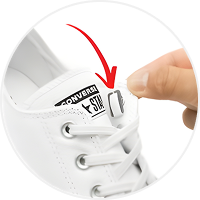
Flat Elastic Laces
No-Tie Shoelaces
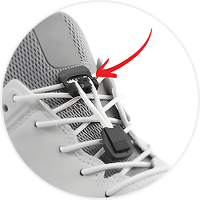
Round Elastic Laces
No-Tie Shoelaces
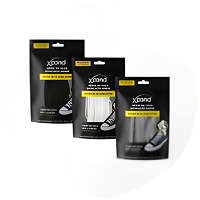
Flat Laces Bundle
5% Pack Savings
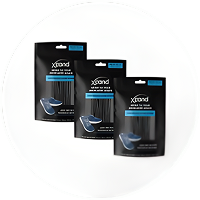
Round Laces Bundle
5% Pack Savings

Short Sleeve Tee
Bamboo Tri-Blend

Long Sleeve
Bamboo Tri-Blend

Hoooded Long Sleeve
Bamboo Tri-Blend
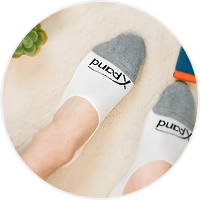
Cushioned
No-show Socks
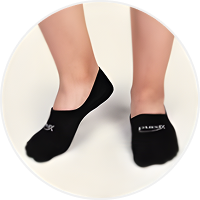
Lightweight
No-Show Socks

Cushioned Bundle
5% Pack Savings

Lightweight Bundle
5% Pack Savings
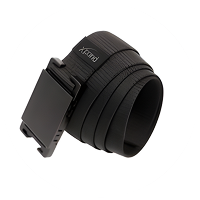
Magnetic Aluminum Urban
Elastic Belt
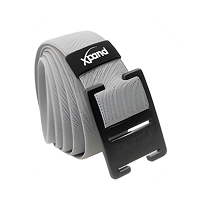
Aluminum Explorer
Elastic Belt
 0
0
NEW YEAR RESET - Use Code 'RESET20'
Free shipping on orders over $35
See All Offers
All Offers
NEW YEAR RESET - Use Code 'RESET20'
A new year is the perfect time to reset the little things that make everyday life easier.
From no-tie laces to belts, socks, shoe wipesand apparel, Xpand is designed to simplify daily routines for parents, kids, athletes, and anyone on the go. They also make thoughtful New Year gifts for family and friends.
Use code RESET20 to save 20% sitewide and start the year with comfort that lasts.
Limited time only while quantities last.
Free shipping on orders over $35
Enjoy free tracked delivery on orders of $35 or more (after discounts).
1/5
90-Day Satisfaction Guarantee. Hassle-Free Returns.
No-Tie Elastic Laces
Slip on & off your shoes with ease
No-Show Socks
Designed to hide in your shoes, without sliding
Elastic Belts
Stretchy belt strap for perfect comfort
Best Seller Packs
Enjoy an extra 5% pack savings

March 03, 2017
How to Customize Your Shoes | Easy DIY's | Xpandlaces
Customize Your Shoes & Sneakers!
Are you less than impressed with the options at your favorite shoe store? You don’t have to settle for average shoes or show up in the same shoes as someone else. Instead, customize your shoes to show off your creative side or match your favorite outfit perfectly, to stand out in a sea of boring sneakers.
Ways to Customize Your Shoes

Forget paying big bucks to order customized shoes. Instead, make your own easily at home! You have many options to customize your sneakers on your own. A little creativity goes a long way, and each of these methods produces a wide array of results, depending on how you apply the customization.
Check out these ways to customize your shoes:
Spray paint: Can you spray paint shoes?
Absolutely! Spray paint is a quick way to cover the shoe completely. The paint stays on the surface of the shoe, rather than soaking into the material. With so many colors and types of spray paint available, this handy trick for customizing your shoes gives you a tremendous amount of versatility.
Dye: Can You Dye Shoes?
The answer is “Yes!” The dye actually soaks into the material to change the color of your shoes. Dying shoes correctly is key to getting the look you want.
Custom Laces

Another simple way to update your footwear is to use custom shoelaces for sneakers. Elastic shoelaces not only give you versatile color options, but they also make your shoes comfortable and easy to wear without tying them each time.
How to Spray Paint Shoes
One option for boring shoe solutions is to spray paint your kicks. When you spray paint shoes, you’re adding a layer of color on top of the existing shoe. This means you can change the color to anything you want. You can turn a dark shoe a light color, or vice-versa.
Spray painting works best to change the color of leather and synthetic shoes. Choose a type of spray paint that works on the specific type of material your shoe is made from. Many spray paint brands make special paint that works on plastic, leather, vinyl and similar materials. Floral spray paint is another option that works well, because it’s flexible and is less likely to crack or wrinkle over time as the shoe material moves.
When you spray paint shoes, you need the following materials:
- Spray paint designed for the type of material used on your shoes
- Deglazer, leather preparer or acetone
- Rags or cotton balls
- Painter’s tape
- Drop cloth
- Rubber gloves
- Newspaper
Start by covering your work surface with a drop cloth or plastic sheet. Choose a well-ventilated area, as spray paint tends to have strong fumes. Once your work area is ready, you can complete the following steps:
- Prep the shoes by using a rag or cotton balls to apply a deglazer, leather preparer or acetone. The goal is to clean off the shoes and remove any coating that might interfere with the paint sticking to the surface. Let the shoes dry.

- Tape off any areas you don’t want spray painted. For example, you don’t likely want the edges of the soles or the heels to get painted. You might also tape off certain design elements on the shoe, such as a bow on pumps or the symbol on a name-brand pair of sneakers. Keep in mind that the paint can seep under loose tape edges. Apply the tape cleanly and securely to get crisp lines on your finished product.
- Stuff newspaper inside the shoe to hold the shape and to prevent the paint from seeping inside and making a mess. This also keeps the insoles from getting covered in paint as you spray the shoes.
- Shake the spray paint well before starting. Hold the can a few inches from the shoes. Spray the shoes with a light, even coat using long, sweeping motions. Thin coats provide better coverage, prevent dripping and reduce the chances of the paint eventually cracking.
- Let each coat of spray paint dry completely. Apply additional coats as needed to get the full coverage and color vibrancy you want.
- Let the paint dry for an hour after the final coat before removing the tape. Let the paint cure another 24 hours.
- Spray on a sealant designed for the type of material used in your shoes. Choose between a matte or a glossy sealant, depending on the look you want. Let the sealant cure for at least 24 hours before wearing the shoes.
Tips for Spray Painting Shoes
Spray painting shoes is similar to spray painting other items, but there are a few shoe-specific things to keep in mind. Use these tips to get the look you want on your spray-painted shoes:
- Plan your design:Know what colors you plan to use and where they will go before you start working.

- Get creative: You don’t have to spray paint the entire shoe the same color. You might only spray paint the toe to create a toe cap look, or you might do a striped effect with your spray painting. Keep in mind that if you want to apply tape over an area after you paint it, you should wait until the paint fully cures before applying the tape. If you put tape on a painted section too soon, it will likely pull off the paint when you remove the tape.
- Start light:If your spray-painted design involves more than one color, apply the lightest color first. This lets you correct mistakes more easily. Dark colors are more difficult to hide if you accidentally spray an area you didn’t want to spray.
- Create a base coat for metallic paint: For a metallic spray paint, start with a base coat in a similar color without the metallic effect. The base coat gives you better coverage for a solid color. Apply the metallic version over the regular paint to give the shoes the finished metallic effect.
- Don’t skimp on prep: The prep phase is the most crucial part of the painting process. Prepping the shoes ensures the paint has a smooth, clean surface, so it can adhere completely.
- Scrape away excess: If some of your spray paint gets on the heel, sole or other places you don’t want it, use a razor blade to gently scrape off the excess paint.
How to Dye Shoes
When deciding how to color shoes, dyeing is another option. Dye changes the color of the shoe fabric, but it doesn’t cover it up. In other words, it’s a transparent layer of color. This means any blemishes on the shoe still show after dyeing. They may be less noticeable with a dark layer, but they may still be visible.
When you dye shoes, you always go darker. Also keep in mind that, since it’s a transparent coloring, the existing color still remains. If you dye your tan shoes a green color, the tan color is still there, so the results may not be quite what you expect. Remember that dye is permanent, so once you dye the shoes, you can’t take it back.
Dyeing Canvas

White canvas provides the perfect canvas for dye. The white color means any color of dye works well. Other colors of canvas also work, but keep in mind the original color may show through. Canvas also absorbs dye well, taking on a rich color.
Check the packaging of your selected dye to determine exactly what you need. In general, the materials needed to dye canvas shoes include:
- Liquid dye designed for fabric
- Canvas sneakers
- Large measuring container
- Rubber gloves
- Waterproof tape
- Metal spoon
- Stainless steel pot
- Stainless steel tongs
- Paper towels
- Plastic table covering
- Sponge brushes
Because dye is permanent, protecting your work area is crucial — unless you want a tie-dyed countertop! Cover your work surface with plastic sheeting or a plastic tablecloth before you start. Using metal pots, glass measuring containers and metal utensils keeps those items from taking on any unwanted color.
Before prepping your dye, cover any areas you don’t want to dye using waterproof tape. Waterproof first aid tape works well. Apply the tape carefully along the rubber edging at the base of the shoe. Remove the shoelace. If you plan to keep the original laces, you can either leave them the original color or place them in the dye to match the new shoe color.

You can dye your canvas shoes in one of two ways: submerged in a dye bath or dye-painted with sponge brushes. The dye bath method is faster, since you dunk the entire shoe in the dye. The dye-painting method gives you more control over the dye application.
To use the dye bath method, follow these steps:
- Fill a large stainless steel pot with hot water. You need enough water to fully submerge the shoes with extra room for the shoes to move. Add the necessary amount of your dye. Refer to the dye instructions to determine the proper water-to-dye ratio based on the amount of water you use.
- Soak the shoes in hot water. Place the shoes in the dye bath using tongs.
- Heat the pot to make the dye bath simmer. Stir the dye bath constantly in different directions. Leave the shoes in long enough to achieve the desired vibrancy. This can vary from 10 minutes to an hour, depending on the look you want.
- Rinse the shoes, starting with warm water. Gradually lower the temperature of the water. Continue rinsing until the water running out of the shoes is clear.
- Wash the shoes in a mixture of warm water and mild detergent. Rinse the shoes thoroughly to remove all of the detergent.
- Dry your newly dyed shoes in the sun.
If you prefer the painting method, follow these steps:
- Heat 4 to 6 cups of water to boiling.
- Place paper towels inside the shoes so the dye doesn’t soak into areas you want to keep plain.
- Shake the dye. While wearing gloves, pour the appropriate amount of dye into a large glass measuring cup that holds 6 cups or more. Add 4 cups of the hot water. Stir to combine the dye and water. Test the color by dipping a paper towel into the dye. Add more dye if you want a darker color. Add more water if you want it lighter.
- Dip a sponge brush into the prepared dye. Paint the dye onto the shoes. Continue dipping and painting to get the coverage and intensity you want.
- Let the shoes rest for about 20 to 30 minutes. Rinse the shoes in cold water. Let the shoes dry overnight. As they dry, they tend to look lighter. Apply more dye if you want a darker color. Repeat the resting, rinsing and drying phase.
You can also get creative with how you dye your shoes. Here are some ideas:
- Dip only the toe or the heel in the dye.
- Dye the front half of the shoe in one color and the back half in another color.

- Create an ombre effect by soaking the entire shoe in the dye bath for a short time and gradually pulling out the shoes a little at a time. The sections that stay in longer get a darker look.
- Use the dye-painting method to apply different colors to the same shoe in any number of designs or patterns.
Dyeing Leather
You can also dye leather shoes using a brush-on painting method. Use dye made specifically for the type of leather on your shoes. Synthetic leather typically doesn’t take dye well, even if the dye says it’s made for synthetic leather, so proceed with caution with these types of shoes. Work in an area with good ventilation, as some of the chemicals and dyes used on leather have harsh fumes.
You’ll need the following supplies to tackle the project:
- Leather preparer and deglazer
- Leather dye
- Leather conditioner
- Neutral polish
- Plastic cover for your work surface
- Rubber gloves
- Old, clean rags
- Masking tape
- Horsehair brush
Leather dye comes with different base options, including water, oil and alcohol bases. Alcohol-based dyes tend to dry quickly and with vivid results. If you choose an alcohol-based product, be sure to use proper ventilation.
Leather shoes typically have coatings on them that can prevent the dye from coloring the shoes completely. Preparing the shoes is an important step to remove that coating and get a consistent color. Follow these steps to prep and dye the leather shoes:
- Apply the leather preparer and deglazer to remove any coating and debris. Rub the preparer on the shoe with a clean cloth. As you apply the preparer, the shoe starts getting lighter and takes on a dull appearance. Follow the product directions, giving the shoes time to dry after applying the preparer.
- Tape off any areas that you don’t want to dye. Make sure the tape adheres well with a crisp, straight line.
- Brush the dye onto the shoes with a small, high-quality paintbrush. Apply the dye in one direction using long strokes for the best results. Follow the stitch lines to minimize the effects of the brush strokes.
- Let each thin layer dry completely before applying another. Apply as many layers as necessary to get the color intensity that you desire.
- Let the shoes dry for 24 to 48 hours. Apply leather conditioner to add moisture back into the leather, as the dyes and chemicals tend to dry out the material.
- Apply a neutral polish over the leather. Use clean cloths and move the cloth around frequently, as some dye may come off as you apply the polish. Buff the shoes using a horsehair brush.

Get creative when dyeing your leather shoes by applying different colors to different areas. You might use a darker color on the toe, for example.
Tips for Dyeing Shoes
No matter what type of shoe material you dye, your methods affect how the shoes will turn out. If you skip important steps, your shoes will likely look like an amateur home job, which is not the look you want.
Improve the chances of shoe-dyeing success with these helpful tips:
-
Start with clean shoes: Any dirt, debris, coating or oil on the shoes will affect how the dye absorbs into the material. The result? Patchy dye that makes it obvious that you tried to change the color.
-
Use the right dye: Not all dyes work for all types of shoes. Check the dye packaging to find a type that matches the fabric of your shoes. If you’re dyeing nubuck leather, choose leather dye that specifically lists nubuck leather on the packaging.
-
Read the directions: Remember when your elementary teachers always told you to read the directions first? Apply that to dyeing shoes. Different brands of dye may have slightly different directions and methods, so don’t assume you know what to do. While the same basic process applies, the brand you choose may have an extra step or other specifics that affect the outcome.
-
Prepare for unknown results: When you dye your shoes, you’re always taking a risk when it comes to the results. Even if you follow the directions precisely, the results may not be exactly what you planned. Dye is sometimes unpredictable. Even if the results aren’t exactly what you wanted, they may be just as amazing, so keep an open mind.
- Apply dye evenly: If you’re brushing on the dye, no matter what type of material the shoe is made of, use even coats to prevent blotchy, uneven color. Be careful not to overload the brush, as this can also result in uneven color. It’s better to reload your brush frequently with smaller amounts of dye.
Custom Shoelaces for Sneakers & Shoes
A simple way to add a unique touch to your shoes is to replace the laces with custom shoelaces. You can combine the shoelace change with dyeing or spray-painting your shoes, or you can ease into shoe customization by only changing the laces.
Lacing Methods
The way the laces go into your shoes plays a role in the look. Changing the way you insert your laces into your shoes can give them a quick update with little effort. Our elastic shoelaces offer many versatile lacing options.
Try one of these lacing methods to customize your shoes:

- Bar lacing:Instead of crisscrossing like traditional shoelaces, the laces appear straight across, like bars. The lace comes up from the bottom, and goes straight across to the hole parallel to the initial hole. You then go up to the hole directly above and go up through that hole and across to the other side of the shoe. This method continues all the way up. The bar lacing method is a low-tension option that stays comfortable throughout the day, even if your feet swell.
- Zipper lacing:This method combines the look of bar lacing and crossed lacing, and works well for light activity. It has a bit more tension than bar lacing. In this method, you go straight across the two bottom holes. Next, take the lace at a diagonal to the next hole on the opposite side. Now, go straight across to the hole directly across from the hole you just put the lace through. Repeat this process, moving up to the next row with a diagonal path and then moving horizontally.
- Standard lacing:This is the method you see all the time, with the lace crossing itself all the way up the shoe. You can change the look by whether you thread the lace through the eyelet from the top or the bottom. Crossing your laces works well for running and other high-intensity activities, since it provides the tightest fit.
No-Tie Lacing
Elastic shoelaces let you convert your kicks into a no-tie shoe style. This gives you a seamless look and makes your shoes quick and easy to slip on as you head out the door. They work well for kids and adults.
Our shoelaces use lace anchors for the no-tie method. You secure the ends of the laces into the anchors and trim them to the appropriate length. We recommend wearing your shoes for a day before cutting them to ensure you get the length just right. You can secure the anchors so they fall on the outside of the shoe, or so they’re hidden on the inside of the shoe.
Are you ready to step out in custom shoe glory? Whether you dye, spray paint or choose another method, don’t forget your shoelace solutions. Grab Xpand® laces in colors that show your bold style. Go with our classic neutrals for a subtle look, or choose from one of our vibrant colors to make the laces stand out! When you're done, snap a picture and tag @xpandlacingsystem on Instagram!
Also in Xpand Blog
CART (0)
✕ SELECT LACES, SOCKS & SHOEWIPES
4 for $40
6 for $50
8 for $60
FREE SHIPPING ON ORDER $35 AND UP
Your Cart is Empty
Continue Shopping"no-tie-original-elastic-lacing-system","quick-release-round-lacing-system","cushioned-no-show-socks","original-notie-lacing-system","xpand-quick-wipes-pack-of-2","cushioned-socks","free-xpand-wipes","quick-wipes-10pcs","original-notie-lacing-system-v4","original-notie-lacing-system-lp-v6-1","original-notie-lacing-system-lp-v6-2","original-notie-lacing-system-lp-v5-2","original-notie-lacing-system-lp-v4-2","original-notie-lacing-system-lp-v3-2","original-notie-lacing-system-lp-v2-2","original-notie-lacing-system-lp-v1-1","original-notie-lacing-system-lp-v5-1","original-notie-lacing-system-lp-v4-1","original-notie-lacing-system-lp-v3-1","original-notie-lacing-system-lp-v2-1","original-notie-lacing-system-lp-v1-2","everyday-quarter-socks","performance-quarter-socks","ankle-socks","original-notie-flatlaces-3-pack","glow-in-the-dark-flat-laces","freebie-no-tie-laces-black-reflective","lightweight-socks","freebie-no-tie-laces-flat-white","no-tie-flat-laces-black",
"no-tie-original-elastic-lacing-system","lightweight-no-show-socks","original-notie-lacing-system","original-notie-lacing-system-v4","original-notie-lacing-system-lp-v6-1","original-notie-lacing-system-lp-v6-2","original-notie-lacing-system-lp-v5-2","original-notie-lacing-system-lp-v4-2","original-notie-lacing-system-lp-v3-2","original-notie-lacing-system-lp-v2-2","original-notie-lacing-system-lp-v1-1","original-notie-lacing-system-lp-v5-1","original-notie-lacing-system-lp-v4-1","original-notie-lacing-system-lp-v3-1","original-notie-lacing-system-lp-v2-1","original-notie-lacing-system-lp-v1-2","original-notie-flatlaces-3-pack","glow-in-the-dark-flat-laces","freebie-no-tie-laces-black-reflective","freebie-no-tie-laces-flat-white","no-tie-flat-laces-black",
{ id: null, shopify_product_id: "2009897304175" },{ id: null, shopify_product_id: "2020196581487" },{ id: null, shopify_product_id: "4166139019375" },{ id: null, shopify_product_id: "4167617937519" },{ id: null, shopify_product_id: "7470282244207" },{ id: null, shopify_product_id: "14673415733611" },{ id: null, shopify_product_id: "14703821259115" },{ id: null, shopify_product_id: "14730153296235" },{ id: null, shopify_product_id: "14736987980139" },{ id: null, shopify_product_id: "14736989585771" },{ id: null, shopify_product_id: "14736990667115" },{ id: null, shopify_product_id: "14736991748459" },{ id: null, shopify_product_id: "14736993517931" },{ id: null, shopify_product_id: "14737004593515" },{ id: null, shopify_product_id: "14737006035307" },{ id: null, shopify_product_id: "14737006133611" },{ id: null, shopify_product_id: "14737007116651" },{ id: null, shopify_product_id: "14737008296299" },{ id: null, shopify_product_id: "14755288744299" },{ id: null, shopify_product_id: "14755288777067" },{ id: null, shopify_product_id: "14755289006443" },{ id: null, shopify_product_id: "14766251213163" },{ id: null, shopify_product_id: "14776631427435" },{ id: null, shopify_product_id: "14791250149739" },{ id: null, shopify_product_id: "14846692196715" },{ id: null, shopify_product_id: "14872267850091" },
3--1.79
6--2.39
7--2.99
9--3.59
1--0





